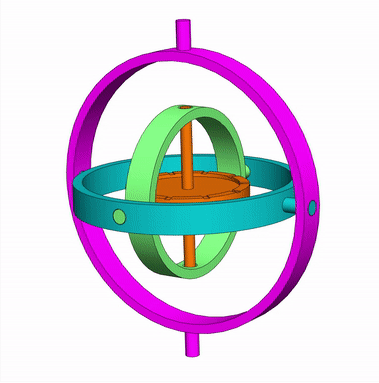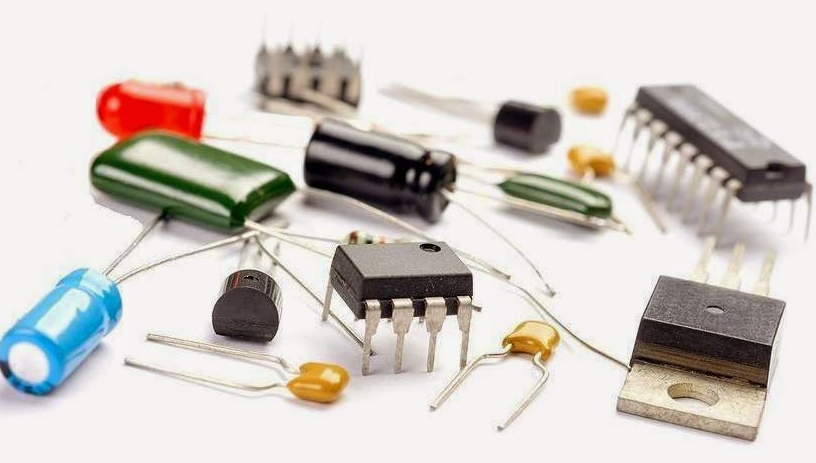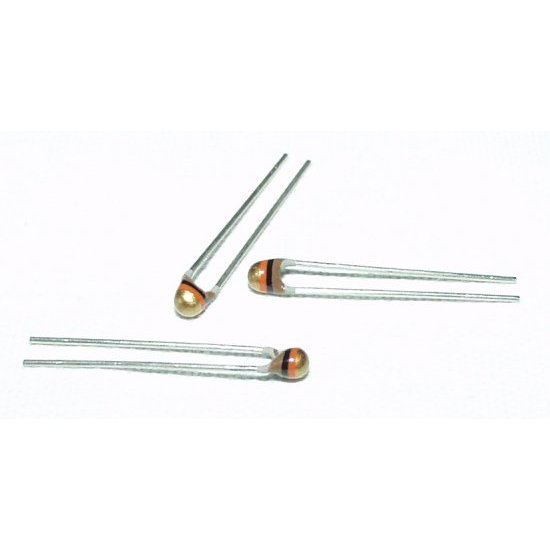IMU / Gyroscope
Accelerometers measure acceleration, and a gyroscope measures angular velocity. The three axes of gyroscope rotation are either referenced about x, y, and z, or as roll, pitch, and yaw. When you combine the data from an accelerometer and a gyroscope, you create an inertial measurement unit (IMU). When you add a magnetometer, then it is possible to calculate attitude and heading, or AHRS.
A Euler angle describes the orientation in degrees around s single reference point in three dimensional space, typically in aircraft terms of roll (x), pitch (y), and yaw (z). Normally the Euler angle is from 0 ° to 180 °
float degPerSec(float radPerSec) {
float f = radPerSec * 180.0 / PI;
return f;
}
The quality of the gyroscope has a big impact on the jitter/speed/drift. The two basic measurements are zero offset and zero noise. Zero offset can be compensated for by taking measurements while the device is at rest and then calibrating your device. Zero noise can be reduced with low pass filtering.
A magnetometer is a device that measures magnetic field, typically expressed in Tesla T or Gauss G.
Tilt Angle
Pitch, roll, and yaw refer to angular motion (rotations) around the X, Y, and Z axes. Linear motion (translations) around the X, Y, and Z axes is called surge, sway, and heave. Yaw is derived from the triaxial magnetometer data. The magnetometer provides the north direction, and the accelerometer gives the down direction. Pitch and roll angles can be derived from acceleration when the accelerometer is in a static condition with the absence of linear acceleration. The accelerometer cannot be moving!
A gyroscope only measures angular velocity and cannot be used to define any Euler angles. The gyroscope values can be used to correct for an acceleration vector that is not down, and when the sensor is rotating or accelerating.
Double integration of acceleration to get tilt is messy and usually doesn't work due to sensor drift and noise. The solution is to merge data from accelerometer, gyroscope, and magnetometer to derive what is called AHRS (attitude and heading reference system).
Adafruit has a AHRS library that will do the calculation using either the Mahony, Madgwick, or NXP alogrithms. If your set of sensors don't match the supported list, then you can calculate the tilt angle (inclination) while the sensor is at rest using the following Arduino code based calculation:
double pitch = atan2 (accelAvg.y ,(sqrt((pow(accelAvg.x,2)) + (pow(accelAvg.z,2)))));
double roll = atan2(-accelAvg.x ,(sqrt((pow(accelAvg.y,2)) + (pow(accelAvg.z,2)))));
float Yh = (magY * cos(roll)) - (magZ * sin(roll));
float Xh = (magX * cos(pitch))+(magY * sin(roll)*sin(pitch)) + (magZ * cos(roll) * sin(pitch));
double yaw = atan2(Yh, Xh);
How to Fuse Motion Sensor Data into AHRS Orientation (Euler/Quaternions)
AHRS for Adafruit's 9-DOF, 10-DOF, LSM9DS0 Breakouts (older)
Zero Offset & Zero Noise Accelerometer / Gyroscope Performance
Below is a summary of the zero noise and offset performance of the following five accelerometer + gyroscope devices using the calibration and performance sketch shared here.
AF #4438 LSM6DSOX (AHRS)
AF #3463 FXOS8700 + FXAS21002 (AHRS)
AF #4569 ISM330DHCX + LIS3MDL (AHRS)
AHRS - works with Adafruit AHRS Library that will calculate heading, pitch, and roll (Euler angle) from the IMU data. Firmware compatible products: AF #4438 LSM6DSOX, AF #4517 LSM6DSOX + LIS3MDL, AF #4565 LSM6DSOX + LIS3MDL, AF #4692 LSM6DSO32, AF #4503 LSM6DS3TR-C, AF #4634 LSM9DS1, AF #3387 LSM9DS1, AF #3463 FXOS8700 + FXAS21002
AF #4692 LSM6DSO32 has same pinout & firmware as LSM6DSOX in AF #4438, AF #4517, AF #4565
AF #4097 ADXL343 has same pins/firmware as ADXL345 as See also: AF #4097, AF #4147, AF #1231
| Product | Features | Connections |
|---|---|---|
| Adafruit LSM6DSOX + LIS3MDL | 9 DOF IMU Accelerometer ±2/±4/±8/±16 g at 1.6 Hz to 6.7 kHz update rate Gyroscope: ±125/±250/±500/±1000/±2000 dps at 12.5 Hz to 6.7 kHz I2C Address 0x6A or 0x6B Gyro zero rate and noise lower than MPU6050 & LSM6DS33 3-axis magnetometer AHRS |
I2C, STEMMA QT |
| Adafruit 9-DOF LSM9DS1 Breakout | Accelerometer range is ±2/±4/±8/±16 g Gyroscope range is ±245/±500/±2000 dps ranges Magnetometer range is ±4/±8/±12/±16 gauss $$ and out of stock AHRS |
I2C, STEMMA QT |
| AF #4502 ST ISM330DHC | 6 DOF Accelerometer + Gyroscope Industrial quality performance, but $$ Accel ±2/±4/±8/±16 g at 1.6 Hz to 6.7KHz Gyro ±125/±250/±500/±1000/±2000/±4000 dps to 6.7 kHz Offset 0.006 rad/sec. Noise +/-0.002 rad/s technical guide |
SPI, I2C, STEMMA QT |
| AF #4438 LSM6DSOX | 6 DOF See also LSM6DSO32 #4692 with accel to 32g Accelerometer + Gyroscope Accel ±2/±4/±8/±16 g at 1.6 Hz to 6.7KHz Gyro ±125/±250/±500/±1000/±2000 dps at 12.5 Hz to 6.7 KHz High performance & low noise Offset 0.007 rad/sec. Noise +/-0.003 rad/s technical guide (AHRS) |
I2C, STEMMA QT | AF #4692 LSM6DSO32 | 6 DOF Similar to the LSM6DSOX, but accel up to 32g Accel: ±4/±8/±16/±32 g at 1.6 Hz to 6.7KHz Accel is noisier than LSM6DSOX and ISM330DHCX gyroscope: ±125/±250/±500/±1000/±2000 dps at 12.5 Hz to 6.7 kHz ±2000 dps technical guide DigiKey |
SPI, I2C, STEMMA QT |
| AF #3886 MPU-6050 | 6 DOF Accelerometer + Gyroscope Old Offset 0.04 rad/sec. Noise +/-0.05 rad/s Accl +/-2g,+/-4g,+/-8g,+/-16g Gyro +/-250,+/-500,+/-1000,+/-2000 dps Bandwidth filter 5,10,21,44,94,184,260 Hz 10,000 g shock tolerant Accel output data rate 1 kHz Gyro total RMS noise 0.05 deg/s Gyro output data rate 8 kHz technical guide |
I2C, STEMMA QT |
| AF #3463 FXOS8700 + FXAS21002 | 9 DOF Precision NXP 9-DOF Breakout Board - FXOS8700 + FXAS21002 Ideal for AHRS (attitude and heading reference system) because of it's low zero-rate level gyroscope Accel ±2 g/±4 g/±8g Gyro ±250/500/1000/2000°/s Output data rates to 800 Hz technical guide AHRS |
AHRS - works with Adafruit AHRS Library that will calculate heading, pitch, and roll (Euler angle) from the IMU data.
| Product | Features | Connections |
|---|---|---|
| AF #4569 ISM330DHCX + LIS3MDL FeatherWing | 9 DOF Accelerometer + Gyroscope + 3-axis magnetometer Industrial quality performance |
I2C, STEMMA QT |
| AF #4502 ST ISM330DHC | 6 DOF Accelerometer + Gyroscope Industrial quality performance. Expensive 4000 dps range Offset 0.006 rad/sec. Noise +/-0.002 rad/s |
SPI, I2C, STEMMA QT |
| AF #4438 LSM6DSOX | 6 DOF Accelerometer + Gyroscope High performance & low noise Offset 0.007 rad/sec. Noise +/-0.003 rad/s |
I2C, STEMMA QT |
| AF #3463 NXP FXAS21002 | 9 DOF Accelerometer + Gyroscope + Magnetometer Discontinued Offset 0.01 rad/sec. Noise +/-0.01 rad/s |
|
| AF #4485 LSM6DS33 + LIS3MDL (also sold as AF #4480 LSM6DS33) |
9 DOF Accelerometer + Gyroscope + Magnetometer Offset 0.034 rad/sec. Noise +/-0.015 rad/s |
|
| AF #4464 ICM-20649 | 6 DOF Accelerometer + Gyroscope Wide range Offset 0.023 rad/sec. Noise +/-0.015 rad/s |
I2C, STEMMA QT |
| AF #3387 LSM9DS1 | 9 DOF Accelerometer + Gyroscope + Magnetometer + Temperature Offset 0.02 rad/sec. Noise +/-0.05 rad/s |
Links
How to Fuse Motion Sensor Data into AHRS Orientation (Euler/Quaternions)
Comparing Gyroscope Datasheets
Accelerometer, Gyro and IMU Buying Guide
Orientation estimation and movement recognition using low cost sensors
Do you need help developing or customizing a IoT product for your needs? Send me an email requesting a free one hour phone / web share consultation.
The information presented on this website is for the author's use only. Use of this information by anyone other than the author is offered as guidelines and non-professional advice only. No liability is assumed by the author or this web site.


















.png)


.png)








.png)
.png)




.png)




.png)

.png)
.jpg)

.png)




.png)

.jpg)



.png)
